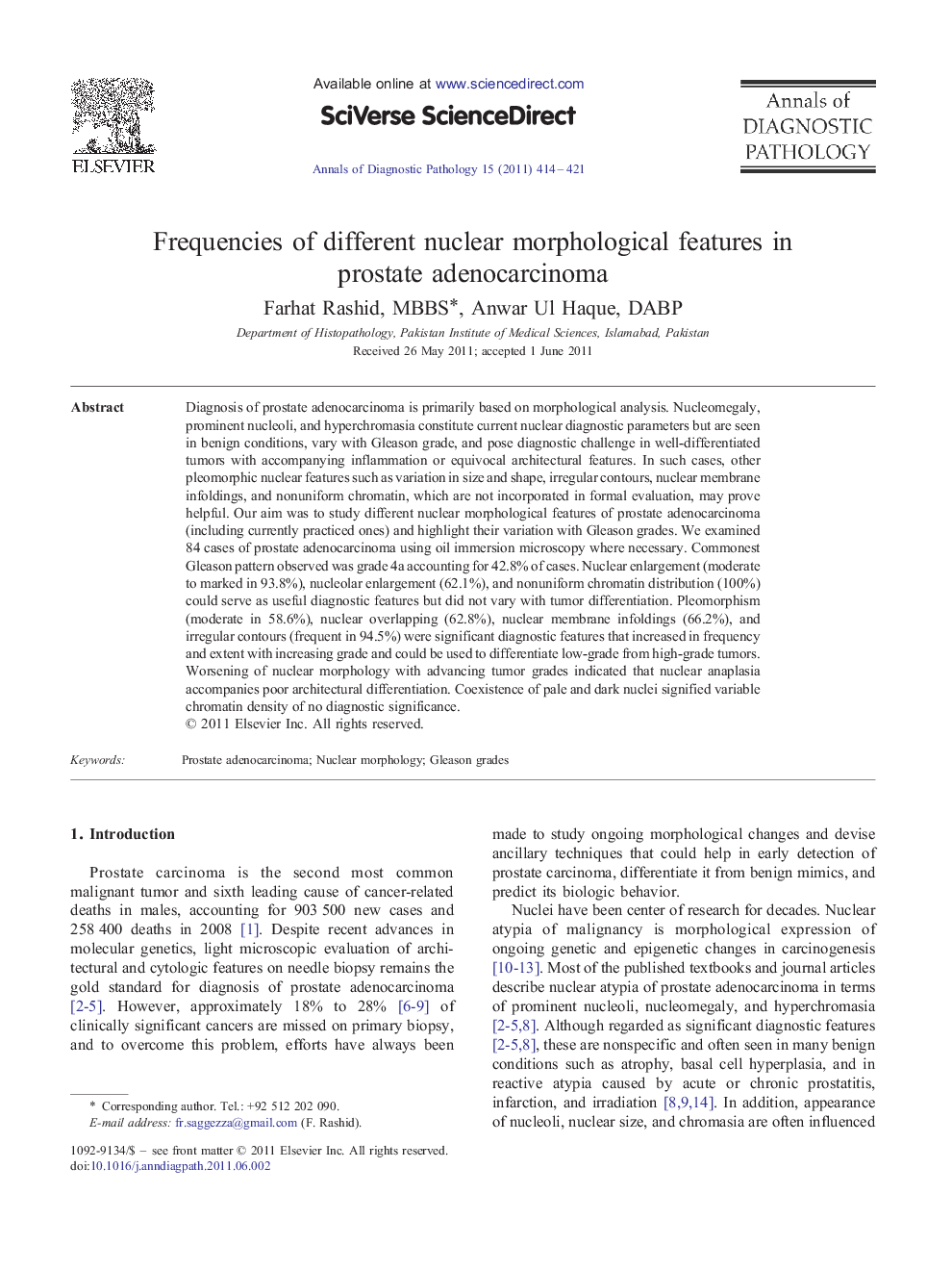| Article ID | Journal | Published Year | Pages | File Type |
|---|---|---|---|---|
| 4130407 | Annals of Diagnostic Pathology | 2011 | 8 Pages |
Diagnosis of prostate adenocarcinoma is primarily based on morphological analysis. Nucleomegaly, prominent nucleoli, and hyperchromasia constitute current nuclear diagnostic parameters but are seen in benign conditions, vary with Gleason grade, and pose diagnostic challenge in well-differentiated tumors with accompanying inflammation or equivocal architectural features. In such cases, other pleomorphic nuclear features such as variation in size and shape, irregular contours, nuclear membrane infoldings, and nonuniform chromatin, which are not incorporated in formal evaluation, may prove helpful. Our aim was to study different nuclear morphological features of prostate adenocarcinoma (including currently practiced ones) and highlight their variation with Gleason grades. We examined 84 cases of prostate adenocarcinoma using oil immersion microscopy where necessary. Commonest Gleason pattern observed was grade 4a accounting for 42.8% of cases. Nuclear enlargement (moderate to marked in 93.8%), nucleolar enlargement (62.1%), and nonuniform chromatin distribution (100%) could serve as useful diagnostic features but did not vary with tumor differentiation. Pleomorphism (moderate in 58.6%), nuclear overlapping (62.8%), nuclear membrane infoldings (66.2%), and irregular contours (frequent in 94.5%) were significant diagnostic features that increased in frequency and extent with increasing grade and could be used to differentiate low-grade from high-grade tumors. Worsening of nuclear morphology with advancing tumor grades indicated that nuclear anaplasia accompanies poor architectural differentiation. Coexistence of pale and dark nuclei signified variable chromatin density of no diagnostic significance.
